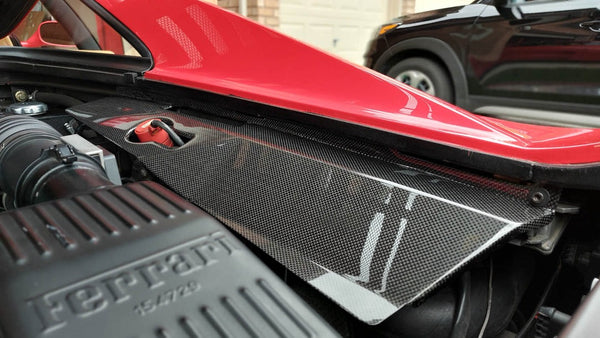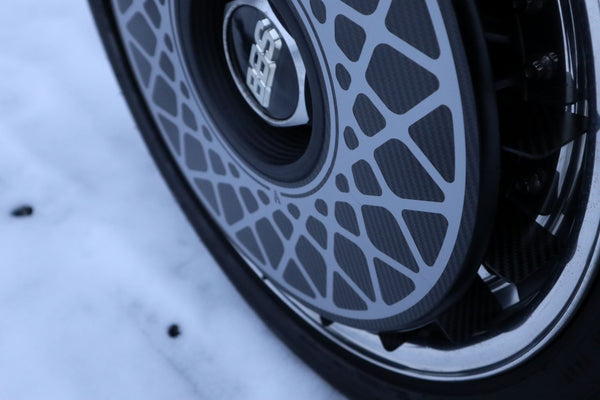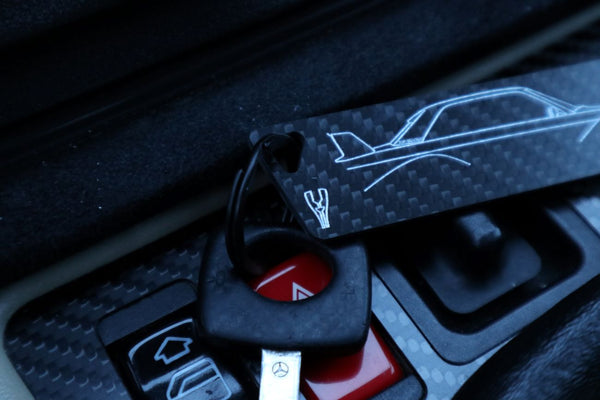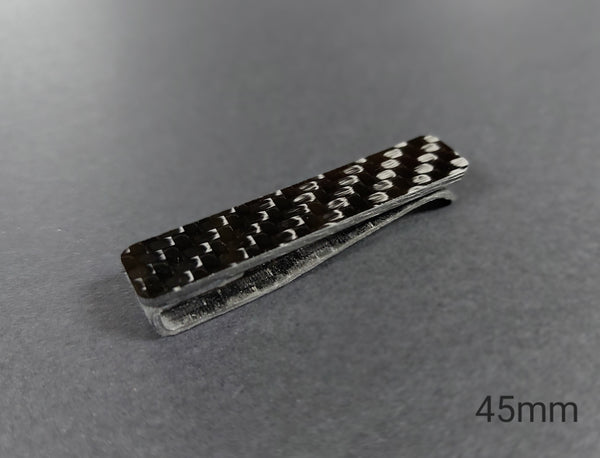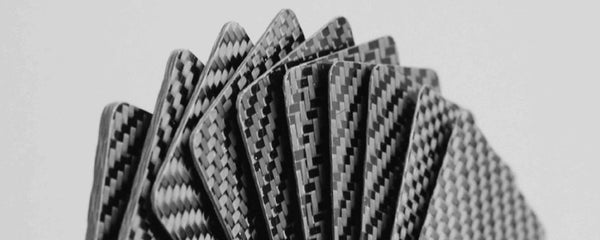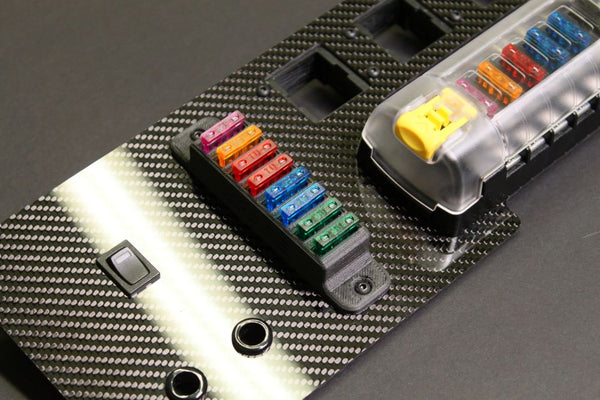
6 things your should know about carbon fiber CNC routing
I always understood the benefits of CNC routing, but it wasn’t until I spent hours cutting, grinding and sanding pieces of carbon fiber, that I realized how useful this tool really was. Today, CNC routing is a part of the daily workflow at STEVS. Here are 6 things that are important to know about carbon fiber CNC routing.
1. Carbon fiber is the stiffest and lightest material available for 2D parts
If you’re designing a part where performance is critical, carbon fiber should be your first choice. Compared to steel or aluminum of the same dimensions, carbon fiber is both stronger and lighter. It’s also extremely stiff. Where metals and plastics exhibit a high degree of bending deformation, carbon fiber will deflect much less, and will have virtually zero plastic deformation. Carbon fiber is more thermally stable than other materials and is resistant to corrosion – meaning it wont rust or oxidize like steel or aluminum. And it’s these properties that make carbon fiber so enticing. From radio-controlled vehicles to cars and drones, carbon fiber is readily used to make parts stronger, lighter and look cooler – It just makes your part better.
2. CNC 2-Dimensional Carbon fiber means no tooling costs
The benefit of designing with CNC carbon fiber shapes is that there are no tooling costs. Even complex 3D structures can be designed using only 2D shapes. These shapes can easily be bonded together using epoxy adhesives, whereas metals need to be welded together which can get costly and time consuming. In the right scenarios this can save time and money associated with moulded carbon fiber components. There are thousands of ways to design with 2D carbon fiber, to get some inspiration, have a look at our products to see how we use CNC routing.
3. Carbon fiber looks better. Get that signature weave
One of the most obvious characteristics of carbon fiber is that ‘holographic’ look. This look is a result of complex weaves of strands containing thousands of tiny filaments of carbon fiber. The filaments reflect light. And because of the complex weave patterns, certain strands catch the light and look shiny, while others look dark. If your project does not necessarily benefit from the performance aspect of carbon fiber, it will surely benefit from the aesthetics. STEVS offers a line of premium carbon fiber sheets in different surface weave types, so you can customize your project and create a unique look. Choose from gloss or satin finishes.
4. Its beauty is more than skin deep
Carbon fiber is a composite. A composite is a material that’s made up of one or more raw materials. In the case of carbon fiber, it’s made up of two parts: The carbon fiber fabric and the resin – which is a liquid. The liquid and the fabric, once cured, create a solid composite. You can choose different thicknesses for your CNC carbon fiber parts. The thickness is determined by the ‘layup schedule’, which outlines the number of layers used, specification of the material and the orientation. More layers mean a thicker and stiffer sheet. There is, however, another way to achieve a stiffer part. Since carbon fiber is a fabric that’s woven together, different weaves can be created.
Different weave types have different properties, which depends on the pattern, the shape and direction of the strands and the number of filaments in each strand. This directly affects the stiffness and bending properties of the fabric. Choosing a certain weave-type can result in different stiffness properties along a specific axis. This is further expanded upon, by the orientation of which the fabric is laid down in relation to the origin. To summarize, you can customize the stiffness of a 2D carbon fiber sheet to best meet your application guidelines.
5. CNC-machined carbon fiber versus waterjet and laser cut
There are many ways to cut parts. Some methods are better for speed, others are better for precision, and quality. At STEVS Design we CNC machine-cut our carbon fiber sheets. This results in a precisely cut part with excellent edge quality. We’ve spent countless hours refining our CNC methods to get the best edge finishes on our carbon fiber parts.
Waterjet cutting is a quicker process than CNC machining but loses its advantage in edge quality. Since the composite structure is literally being torn apart by a high-pressure water stream, the edges will look frayed which means they have to be sanded down. Another disadvantage is the loss of accuracy when cutting thicker materials. When the cutting jet reaches deeper into a sheet, the force decreases and is deflected. The part edge on the exit side of the water jet will be inaccurate and look jagged.
Laser cutting is a very precise way of cutting carbon fiber, yielding extremely tight tolerances and small inside radii. This method, however, doesn’t achieve the same edge quality as CNC cutting does. The heat of the laser can cause melting and warping near the edges of the part and can subtly affect the characteristics of the epoxy resin.
CNC cutting yields some of the best results in precision and edge quality, but lacks the speed compared to the other methods. When CNC cutting carbon fiber sheet, it can take multiple passes depending on the size and type of cutting bit. It can be time consuming and tricky to figure out the best cutting speeds and tool paths. Here at STEVS we have put in the time and hard work to dial this in. Leave it to us to cut your carbon fiber parts for your next project.
6. How to get a CNC carbon fiber part made
To start, you need a 3D CAD model. This model is imported into specialized CAM software, where a cutting tool path is generated. This is where the speeds and feeds are determined, as well as the number of passes required to fully cut the sheet. This tool path is converted into a coordinate language, called g-code, which is then uploaded to the CNC controller and translated into movements along 3-axis: X, Y and Z. These movements, along with the rotation of the cutting tool, will all work together to cut a shape.
If you don’t have a 3D CAD model, don’t worry, we can help you get your design made. Just supply us with an original part you’d like to recreate in carbon fiber. If you don’t have a part but you have a cool idea, we can work with that too.
Get your carbon fiber project underway. Contact us today and let’s make this happen.
